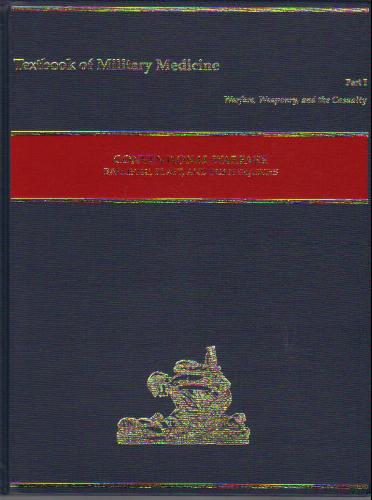
Conventional Warfare: Ballistic, Blast, and Burn Injuries
by Ronald F. Bellamy, et al.
Publisher: Office of the Surgeon General 1991
ISBN/ASIN: B000H3XG88
Number of pages: 396
Description:
Because modern warfare will continue to rely on soldier-to-soldier fighting, conventional munitions will be a significant source of casualties regardless of the sophisticated weaponry. Ballistic, blast, and burn injuries in austere settings will continue to demand the attention of the medical corps in order to provide the best possible care and to save lives.
Download or read it online for free here:
Download link
(multiple PDF files)
Similar books
 Enhancing Interoperabillity Among Enlisted Medical Personnel
Enhancing Interoperabillity Among Enlisted Medical Personnelby Harry J. Thie - RAND Corporation
To reduce costs and increase interoperability of the military services, a joint medical education and training campus is being established at Fort Sam Houston, Texas with a view to consolidating training across the services.
(14045 views)
 War Psychiatry (Textbooks of Military Medicine)
War Psychiatry (Textbooks of Military Medicine)by Franklin D. Jones, at al. - Borden Institute
This volume addresses the delivery of mental health services during wartime, discusses the concept of combat stress reaction, the delivery of mental health care on the various battlefields, and the psychological consequences of modern combat.
(16319 views)
 An Overview of Complementary and Alternative Medicine Therapies for Anxiety and Depressive Disorders
An Overview of Complementary and Alternative Medicine Therapies for Anxiety and Depressive Disordersby John W Williams, Jr, et al. - Department of Veterans Affairs
Since depressive and anxiety disorders share common features with PTSD, this report examines the efficacy of complementary and alternative medicine therapies for depressive and anxiety disorders as a means to detect treatments applicable to PTSD.
(10935 views)
 Medical Management of Biological Casualties
Medical Management of Biological Casualtiesby Jon B. Woods - USAMRIID
Concise supplemental reading material to assist in education of biological casualty management. This is a reference for the health care provider on the battlefield or in a clinic, who needs basic summary and treatment information quickly.
(11670 views)